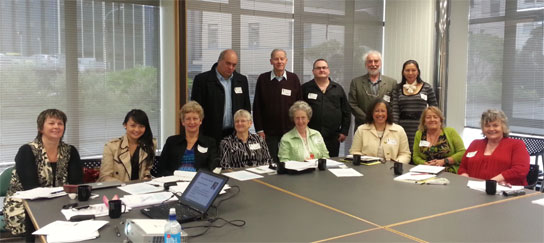If you have difficulties viewing this email, please view online |
December 2013 |
|
| |
Greetings
The December newsletter of the National Health IT Board is now available.
You are receiving this email because of your interest in health IT but if you would rather not receive our updates, please
click the 'unsubscribe' button at the bottom of this newsletter.
|
| |
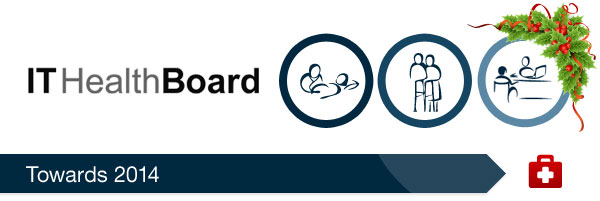 |
 |
|
| |
|

 As we head to the beach this summer it is worth reflecting on both the achievements of the past year and the size of the task still ahead of us. While much has been achieved in 2013, we now need to put our foot on the accelerator to achieve the eHealth vision by the end of 2014.
As we head to the beach this summer it is worth reflecting on both the achievements of the past year and the size of the task still ahead of us. While much has been achieved in 2013, we now need to put our foot on the accelerator to achieve the eHealth vision by the end of 2014.
Secure online patient portals are a key part of that vision. Research shows that people want access to their own health information and to manage aspects of their own health, such as ordering repeat prescriptions, viewing their lab test results or following up a recent consultation, at times that suit them and from the comfort of their own homes.
And there are significant benefits for GPs, too. Portals free up clinicians’ time and enhance the doctor-patient relationship, providing more opportunities for discussion and shared decision-making about a person’s health. There is a real opportunity here for GPs to offer patients a valuable new service which all the best evidence suggests that people want to use.
There are undoubtedly questions about how it will work, what the various options are and so on, and the National Health IT Board will be making a concerted effort to engage with GPs and PHOs around New Zealand in the early part of 2014 to address these. We are also talking to experienced health researchers such as Dr Sue Wells, who has studied the rollout of portals in the United States.
The pressure will be on us all in 2014 to step up to the challenge of using the information technology at our fingertips to improve the effectiveness of the health system and, ultimately, improve the health of all New Zealanders.
One of the areas we will be looking at more closely in the coming year is the capability and skill mix of the people working in health IT. This can easily be overlooked as we focus on engaging with people on the front line of health care. We need to ensure we are building our capability and professionalism. We will be looking for examples of excellence and opportunities to improve the way we work and develop eHealth professionals during 2014.
All of this is about having high expectations and doing our utmost to meet them. The updated National Health IT Plan launched by the Minister of Health in November maps out the priorities through to 2014 and beyond. Our booklet ‘Sharing Health Information: Toward better, safer care’ describes some of the progress in areas like eReferrals, eMedicines, telehealth, and clinical information systems that communicate more effectively with each other.
I was delighted to attend the highly successful Health Informatics New Zealand (HINZ) conference in Rotorua in November and, along with Health Minister Tony Ryall, be on hand to congratulate the winners of this year’s Clinicians’ Challenge. The conference is New Zealand’s premier health informatics event and is an excellent opportunity to make new connections and strengthen old ones. And as always, I am impressed by the innovative thinking going on by clinicians around New Zealand and the IT vendors who are eager to find practical solutions to everyday work-related issues.
There is clearly much to celebrate from the past year – and much still to do. My recent meetings with DHB CEOs shows me we are on their agenda.
As always, I would like to thank Dr Murray Milner, members of the NHITB Board, the Consumer Panel and the National Information Clinical Leadership Group for their guidance and input to the IT Board’s work of the past year.
Graeme Osborne
Director
National Health IT Board
| |
|
|
| |
Clinician’s Corner –
Dr Sadhana Maraj
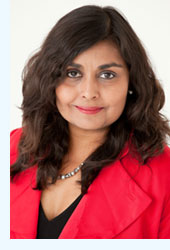 |
| Dr Sadhana Maraj |
As 2013 draws to a close, it is timely to reflect on the key meetings and engagements that have occurred in the past year, and to get a sense of the progress that has been made and the scale of the task still in front of us.
We are increasingly moving to a partnership model and we are seeing that reflected in the conversations happening within the sector, as groups like the National Information Clinical Leadership Group (NICLG), the Telehealth Forum, the Vendor Forum, and the Consumer Panel meet to share their perspectives, discuss implementation pathways, and to signal areas requiring further attention.
These meetings are proving very fruitful and will continue in 2014, with another meeting of NICLG and the Consumer Panel (for example) planned for early in the new year. NICLG held a planning day recently and reaffirmed the need to remain focused on a set of core priorities, including electronic medication management, increasing uptake of patient portals, and wider implementation of shared care planning tools to improve health outcomes. The Consumer Panel, meanwhile, has produced a paper outlining consumer expectations about protecting personal health information, and this will be shared widely.
These meetings are taking place against a backdrop of ongoing progress to deliver on the Government’s eHealth vision as expressed through the National Health IT Plan. Good progress has been made in the past year across a raft of initiatives such as electronic referrals, electronic prescribing and administration (ePA), patient portals and shared care. Clinicians around New Zealand are already experiencing the benefits of improved access to high quality, accurate patient information, and we will see more of this in the coming year.
Recent highlights include the Minister’s launch of the update to the National Health IT Plan and the booklet ‘Sharing Health Information: Toward better, safer care’, available from our website. The Health Informatics New Zealand (HINZ) conference in Rotorua was also a success, once again providing opportunities for clinicians, vendors, researchers and policy-makers to make new connections and hear what others are doing in the world of health IT. Messages that came through very strongly included the need for online access to good quality health information, and for the sector to move from measuring levels of activity to measuring the quality of service provided to patients.
A particular highlight of HINZ for me was the announcement of this year’s winners of the Clinicians’ Challenge, which you can read more about here. Congratulations to all of the winners and we are looking forward to hearing from them at next year’s HINZ conference.
Looking ahead to 2014, we want to accelerate uptake of a number of eHealth initiatives, particularly the use of secure online patient portals which offer considerable benefits for both clinicians and consumers. We know that people are keen to see their own health information and have more control over aspects of their health, such as viewing lab results as they come in and requesting repeat prescriptions. The challenge now is to meet that need.
I wish you all a Merry Christmas and a happy New Year.
Sadhana Maraj
eHealth Clinical Lead
Manager, Health IT Engagement
|
|
| |
|
|
 |
| |
|
|
| |
IT Plan update and Booklet launched
Health Minister Tony Ryall has launched an update to the National Health IT Plan and a booklet showcasing IT innovation within the health sector.
He visited Wellington’s Island Bay Medical Centre for the launch, meeting with GP Richard Medlicott and three patients to discuss their use of an online patient portal offered by Dr Medlicott’s practice.
Mr Ryall said information technology was transforming the way doctors, nurses, pharmacists and other health professionals cared for patients.
The National Health IT Plan was first published in 2010 and this update to the Plan provides a roadmap on the sector’s priorities for IT investment through to the end of 2014, and beyond.
The IT Plan is available here
The Minister also launched the IT Board’s eBooklet ‘Sharing Health Information: Toward better, safer care’, which highlights examples of how information technology is being used to improve the quality, safety and efficiency of health care delivery with the aim of better health outcomes for New Zealanders.
The eBooklet is available here
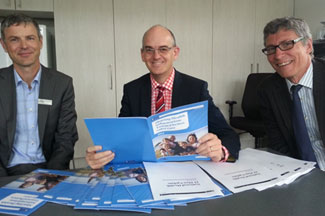
Wellington GP Dr Richard Medlicott, Health Minister Tony Ryall, and Graeme Osborne, Director of the National Health IT Board, at the launch.
|
|
| |
|
|
| |
|
|
| |
Clinicians’ Challenge 2013 winners announced
The winners of this year’s Clinicians' Challenge have been announced.
Health Minister Tony Ryall awarded prizes to the winning clinicians and vendor at the Health Informatics New Zealand (HINZ) conference in Rotorua on 27 November.
Clinicians from around New Zealand submitted 27 work-related problems which they thought would benefit from an IT solution, and these were then made available to IT vendors to work on.
First prize for an entry submitted by a clinician went to Dr Aniva Lawrence, the Clinical Director of adolescent health at Paihia Medical Services, and Dr Kyle Eggleton, Clinical Director of primary health care for Northland PHOs.
They proposed developing an online health survey for young people which could then be put into an electronic record and used to provide targeted health services. Young people visiting a youth clinic or their GP could complete a survey via an iPad application, with the results automatically uploaded for health professionals to view. This would then help health providers build up a picture of the health status and needs of their youth population.
This winning clinical entry builds on a successful pilot project called Taiohi ConTxt, which is run in partnership with Northland District Health Board, primary health organisations, Vodafone New Zealand and the University of Auckland.
The award for the best solution put forward by an IT vendor went to a company called Health Kiosk. This solution related to a clinical entry put forward by Dr Ruth Large from Thames Hospital, who suggested developing a triage phone line to help ambulatory patients arriving at hospital emergency departments to determine if they needed to be there.
NHITB Director Graeme Osborne says the Clinicians’ Challenge is an opportunity to put creativity and technology to work on the real-life everyday problems that clinicians face.
The Clinicians’ Challenge is run jointly by the National Health IT Board, the New Zealand Health IT Cluster, and Health Informatics New Zealand.
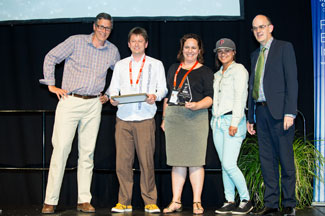
Caption (Left to right): Graeme Osborne, NHITB Director, with Dr Kyle Eggleton from Manaia Health PHO, Dr Aniva Lawrence from Te Whareora o Tikipunga, Te Wai Henry, a youth advisor with the Taiohi ConTxt pilot, and Health Minister Tony Ryall.
|
|
| |
|
|
| |
| |
|
|
| |
In this issue...
Message from NHITB Chair Murray Milner
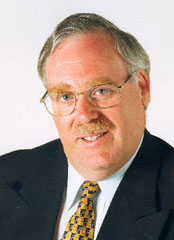
Dr Murray Milner
The speed with which the year has passed reflects the volume of activity undertaken this year. Everyone in the health sector has been running to deliver on their targets for 2013, and the National Health IT Board is no exception. Our focus has been on completing the foundations needed to achieve our eHealth vision, and to identify and fill any remaining gaps which will stop us from achieving that vision.
The vision was always going to be a stretch goal and it is certainly proving to be so. We have made many steps forward in the journey, and most of the building blocks are in place, but it will still be a challenge to deliver the goal for all New Zealanders.
The vision is now well enshrined within the Pohutakawa Tree depiction of the information model being pursued by the NHITB for use across the sector. It depicts the fundamental information required for every New Zealander, highlights the continuum of care from community and primary through to secondary and tertiary, together with the need to support wellness and long term conditions on an equitable and consistent basis. In this model, all information related to a person’s care is owned by that person and is used by authorised health practitioners to deliver excellent health care in any setting.
Much of our work for 2013 has focused on empowering people to take more ownership of their personal health by providing them with increasing access to their health information. We have been working very closely with our Consumer Panel and our National Information Clinical Leadership Group (NICLG) to ensure that ICT supports patient and clinician needs and does not subsume them.
One of the most critical enablers of the health sector information model is the health identity platform. The platform supporting National Health Index (NHI) and Health Practitioner Idex (HPI) was successfully upgraded earlier this year. Any safe sharing of health information relies heavily on having accurate, relevant knowledge about the unique identities of people using health and disability services.
Another major item of work during the year has been the updating of the National Health IT Plan. This updated Plan focuses on the immediate priorities and also picks up on the many lessons we have learnt since the Plan was first published in 2010. It’s a very useful document and I encourage you all to read it.
I am sure we are all looking forward to some rest and relaxation over the Christmas break. We certainly need a highly invigorated and motivated team across the health sector to deliver the eHealth vision at the end of 2014. So I will take this opportunity to wish all of you a safe and happy festive season with your friends and family, and I look forward to working with you all in the New Year.
Murray Milner
HISO Update
The Health Information Standards Organisation (HISO) terms of reference have been updated to ensure key standards are being developed which support delivery of the National Health IT Plan.
The terms of reference are available here
A number of HISO members have come to the end of their terms of appointment, and the National Health IT Board thanks them for their contributions. Outgoing members include Barbara Robson, Donna Cormack, Denise Irvine and Stephen Purchas.
Nominations were subsequently sought for professionals with an interest and experience in health research, nursing, integrated care and informatics. The November meeting of the IT Board then appointed the following people to HISO:
Koray Atalag - a senior research fellow with the National Institute for Health Innovation at Auckland University. Koray trained as a medical doctor and has a PhD in information systems.
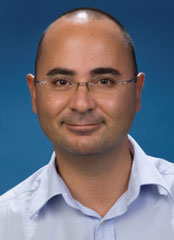
Koray Atalag
David Hay - chairs the HL7 New Zealand board and is a project strategist for Orion Health. Supported by the Ministry of Health, HL7 New Zealand runs interoperability workshops at Health Informatics New Zealand events and links with the international informatics community.

David Hay
Greg Garratt - a pharmacist and owner of an Invercargill pharmacy and two rural pharmacy depots. He was a finalist in the New Zealand Pharmacy Awards 2013 for innovation in pharmacy for robotic dispensing.
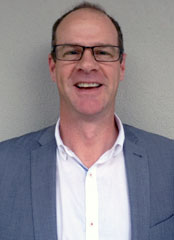
Greg Garrett.
Continuing HISO members are: Zeeman van der Merwe (chairperson), Dougal McKechnie, Darren Douglass, and Deborah Rowe.

|
|
| |
|
|
|
 Patient portal rollout aided by US experience
Patient portal rollout aided by US experience
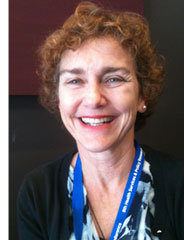 |
Sue Wells
|
A New Zealand Harkness fellow who has studied the use of online patient portals in the United States is sharing her observations to help with their rollout here.
Dr Sue Wells, from the School of Population Health, University of Auckland examined the use of electronic health records to improve health care delivery for chronically ill patients while on a Harkness Fellowship to Harvard Medical School and the Brigham and Women’s Hospital in 2012.
She has returned with a list of observations about the use of portals, which she is sharing with the National Health IT Board (NHITB), clinicians, researchers, health leaders and others.
Patient portals are a priority for the NHITB as part of achieving the Government’s eHealth vision of all New Zealanders having electronic access to their core health information by the end of 2014.
Many patients around New Zealand already have access to a portal through their GP, and the NHITB wants to accelerate progress across the health and disability sector next year so that portals are available to all.
Dr Wells says patients in the US who have taken up the offer to access their health information through secure portals often identify critical gaps in the records such as missing family and social history details or seeing medications that were long since stopped by their doctor but not removed from the medication list. In this way, patients are partnering with their healthcare team to ensure the information is up to date and accurate.
“They really are a highly invested second set of eyes when it comes to viewing their own health information, and this is helping to improve the accuracy and safety of the systems over there,” she says.
Portals are especially popular with patients as a way to make appointments at their own convenience, renew prescriptions and have the script sent to a pharmacy of their choosing, receive same-day laboratory test results,and view the list of their health problems, the medicines they are on and allergies or alerts that they may have. The portals also provide links to patient-friendly, high-quality health educational material so patients do not need to trawl though the internet for trustworthy information about their health problems.
Doctors’ fears of being “bombarded” with emails from patients have not come to pass, says Dr Wells.
“Initially they were a bit unsure but they’re finding that the portals save them a lot of time. They don’t have to play telephone tag with patients – there’s one message, one reply, and it’s all saved in the notes within the portal and can be accessed if needed. It’s proving very beneficial.”
Not all US health care providers offer patients a portal but Dr Wells says a number have had them for a while and, like New Zealand, their use is spreading.
One thing she noticed was a lack of communication between the various portal systems.
“You can communicate really well within a system over there but not between systems,” says Dr Wells. “For example, if I lived in Boston and my mother was in Georgia, I would not be able to look at her health information unless I was registered on the same system, even if she had nominated me as her caregiver.”
She says portals have the potential to really improve health care in New Zealand and people need to be actively talking about them and preparing for their rollout.
|
| |
Message from Peter Gow, Chair, National Information Clinical Leadership Group (NICLG)
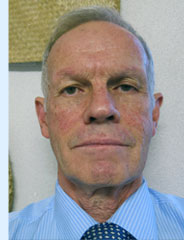 |
Peter Gow
|
As we come to the end of 2013 it is worth reflecting on the purpose of NICLG and the priorities for the coming year.
NICLG was established to champion the development and implementation of the National Health IT Plan, and to promote engagement with clinicians in order to ensure the usability and uptake of important initiatives and programmes of work.
NICLG’s membership has expanded from its original focus on medical colleges and clinical professional bodies to now include clinical governance and health IT governance at DHB and regional levels. This has been a positive move for the group, as it strengthens the networks of professional contacts the NICLG can draw on for insight, expertise and advice.
The communication with the National Health IT Board has evolved to one of co-design of models of care and safe and effective Health IT enablement, with consumers, clinicians, and IT Board members working cooperatively. This is particularly necessary in discussion about the National Health IT Plan and prioritisation, based on quality and safety principles, including the experience of patients.
Topics discussed have included medication safety, patient input into decision-making by means of shared care programmes and secure online portals which allow patients to see and, in partnership with the health professionals caring for them, better understand their clinical information. These tools are also giving ready access to all the information necessary for accurate diagnosis and appropriate evidence-based management. The work plan for 2014 includes making sure:
- there is enough time to focus on the progress of specific National Health IT Plan initiatives
- measurements of progress relevant to the IT Plan are available to NICLG members for discussion at each meeting, including regional uptake of the various systems
- there are regular regional updates and that members are able to highlight issues which require NICLG guidance or input
- NICLG members are champions for the IT Plan in their regions and are involved in the prioritisation of IT-related activities in their DHB and region
- NICLG reviews the list of IT Plan initiatives and priorities
I would like to thank the members of NICLG for their hard work of the past year, and offer Christmas greetings to all.
Peter Gow
|
| |
|
 |
| |
| |
John Garrett, Chair, New Zealand Telehealth Forum
 |
John Garrett
|
As the new Chair of the New Zealand Telehealth Forum I would like to firstly thank Malcolm Pollock for his work as the Interim Chair. Malcolm continues to play an important role on the Executive. Sadly, Terri Hawke, our administrator, has moved on to bigger and brighter things. Her capability and efficiency will be missed.
The forum has this year started the move from planning to productivity. We have identified several key issues, which we believe need addressing as the use of telemedicine in New Zealand expands. These include the interoperability of videoconferencing devices and networks, telemedicine protocols and procedures, funding models, and 'back office' functionality to support telemedicine activity.
The forum hosted a successful Telemonitoring Workshop at the HINZ Conference in Rotorua, and will look to become increasingly involved with clinicians and vendors as this aspect of telehealth matures in New Zealand.
We are aware of and encouraged by a number of new services that have started around the country over the past year, and are actively assisting two other groups as they look to establish telemedicine services. We would welcome direct contact from anyone else considering using telemedicine, by email to either myself john.garrett@cdhb.health.nz or Pat Kerr pat@telehealthnz.co.nz
In the meantime, from all of us at the Telehealth Forum, enjoy the summer break and we look forward to engaging with you again in 2014.
John Garrett
|
| |
|
| |
Back to Top |
|
|
|
|
| |
|
 |
|
















